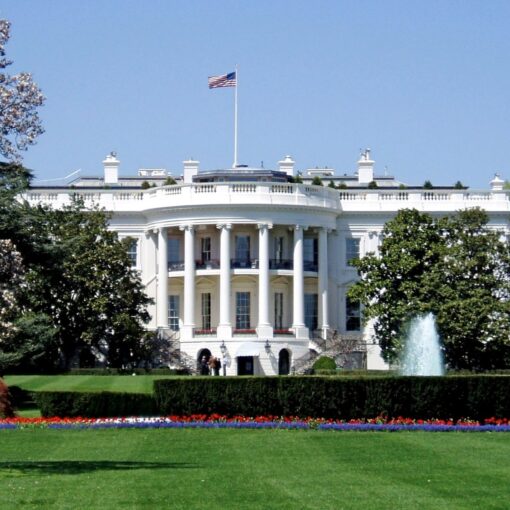Michael Burger and Jessica Wentz
On Monday, President Trump issued an executive order directing all agencies to control regulatory costs by: (1) ensuring that the “incremental costs” of all new regulations that are finalized this year, including repealed regulations, are no greater than zero, and (2) identifying two regulations for potential repeal for every new regulation that is proposed. The order does not mention the benefits of regulation, nor does it specify how incremental costs should be calculated. It also fails to describe how agencies are supposed to comply both with the order and with their statutory mandates.
The lack of explanation is telling. Indeed, the order suffers from a fundamental problem: It conflicts with statutory requirements and undermines agencies’ abilities to implement those requirements faithfully. Agencies do not simply regulate for the sake of regulation – each regulation is aimed at implementing a specific provision of a statute passed by Congress. In many cases, agencies are either prohibited from considering costs or required to consider both costs and benefits when issuing regulation. And statutes do not typically, if ever, permit agencies to consider the aggregate costs of regulations across all of their programs when issuing a particular regulation.
This is certainly true for many environmental statutes. Take, for example, Section 109 of the Clean Air Act. It requires the U.S. Environmental Protection Agency (EPA) to establish national ambient air quality standards (NAAQS) for air pollutants “the attainment and maintenance of which… are requisite to protect the public health.” Section 108 outlines factors that EPA should consider when setting the NAAQS, and cost is not included among those factors. As the late Justin Antonin Scalia noted in Whitman v. American Trucking Associations (2001), the statutory language is “absolute” – it “unambiguously bars cost considerations from the NAAQS-setting process, and thus ends the matter for us as well as the EPA.”
Other statutory provisions require agencies to weigh both costs and benefits. This is typically the case when EPA and other agencies establish technology-based performance standards for power plants, cars, and other pollution sources. The statutory provisions calling for the establishment of such standards typically require the agency to establish standards that reflect the “best system” for or “maximum achievable” rate of pollution reduction, taking into account costs and other factors. Such language requires agencies to compare the environmental benefits of a proposed standard with its economic costs. This is the language the Obama-administration EPA relied on in setting greenhouse gas emissions standards through the Clean Power Plan and its methane rule for oil and gas operations, among other things.
When the costs of regulations are monetized, the benefits must be too. This was the rule articulated by the Ninth Circuit Court of Appeals held exactly that in Center for Biological Diversity v. National Highway Traffic Safety Administration (NHTSA) (2008). In that case, NHTSA had established fuel economy standards in accordance with the Energy Policy and Conservation Act of 1975, which requires NHTSA to determine the “maximum feasible average fuel economy” for cars, taking into account technological feasibility and economic practicability, among other things. NHTSA had conducted a cost-benefit analysis when setting the standards in which it monetized economic costs and some environmental benefits but failed to monetize the benefit of reducing GHG emissions under different standards. The court held that this omission was arbitrary and capricious, and that NHTSA “cannot put a thumb on the scale by undervaluing the benefits and overvaluing the costs of more stringent standards.”
The other component of the order – the requirement to identify two regulations to repeal for every one that is proposed – is also fundamentally flawed. While it is true that some regulations are promulgated at the discretion of the agency, these regulations are nonetheless tied to statutory directives and cannot be withdrawn willy nilly. Agencies must initiate a new notice and comment rulemaking for withdrawal of rules that themselves went through the notice and comment process, and they must provide a reasoned basis for the decision that is premised in the authorizing statute – not in some half-considered White House policy prescription. That was the Supreme Court’s message in Massachusetts v. EPA, the case that set in motion EPA’s GHG regulations. Decisions not to regulate cannot “rest[] on reasoning divorced from the statutory text.” As a result, a reviewing court would likely find any withdrawal of a regulation that rests on the executive order’s rationale to be an impermissible reading of the statute, or otherwise arbitrary and capricious.
Some commenters have suggested that this is simply a political stunt, and that the practical effect of the order will likely be limited by the types of statutory directives and legal considerations noted above (this article is one example). “Pay as you go” and “one in-two out” do have a nice sound bite quality, and plainly pay to the anti-regulatory contingent. Moreover, the order does recognize that agencies can only follow its directive “to the extent permitted by law.” But it is nonetheless, at the very least, confusing, and will likely make it harder for agencies to do their jobs. And while erecting hurdles in the executive branch may ultimately serve Trump’s deregulatory agenda, it will neither serve the interests nor protect the health and well-being, of the American people.




